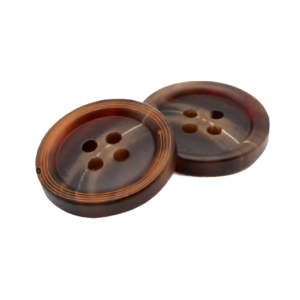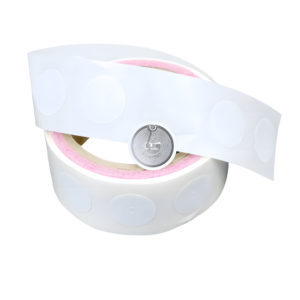NXP High Frequency RAIN RFID Family
As we know, RFID chips are the main components of RFID transponder and the core of the whole RFID system. The basic structure of the RFID chip generally contains modules such as RF front-end, analog front-end, digital baseband and memory unit. RFID chips mainly involve frequency bands such as 125KHz, 13.56MHz, 433MHz, 860-960MHz, 2.45GHz and other frequency bands, of which 13.56MHz high frequency and 860-960MHz UHF are the major applications frequency. This article focuses on 13.56MHz high frequency main RF ICs.
From the standard protocol, 13.56MHz high frequency is mainly divided into ISO15693 and ISO14443 protocols, the difference between them says that ISO14443 is near-field coupling, ISO15693 is far-field coupling, ISO14443 has encryption function, ISO15693 has good penetration, strong anti-interference ability.
Of course, now some ISO15693 chips have also added some encryption functions to expand their application scope, such as BGI Semiconductor ISO15693 to increase the national secret SM7. ISO14443 is also divided into two kinds of ISO14443A and ISO14443B, ISO14443B is more private, and is currently mainly used in the financial field, including ID cards, bank cards, etc.
When it comes to 13.56MHz high-frequency chips and manufacturers, we have to mention the word NXP. NXP’s 13.56MHz high-frequency chip is unshakable in the global market position, and it is the leader and application promoter of RFID chip research and development.
Below we take the NXP series chip as the main line to introduce different types of chips and application scenarios. At present, it includes 3 major sections of the Mifare Series, the NTAG Series and the ICODE Series.
1. MIFARE SERIES
MIFARE products are fully compliant with ISO/IEC 14443 and up to the NFC Forum Category 4 standard. Including Classic, DESFire, Plus, Ultralight, SAM and other series, of which the most commonly used is S50, S70 and MIFARE Ultralight, suitable for low-cost, high-traffic applications, such as: public transportation, membership cards and event tickets, MIFARE Ultralight series of products contain 3 members OF MIFARE Ultralight C, MIFARE Ultralight EV1、MIFARE Ultralight Nano。
MIFARE Ultralight C
MIFARE Ultralight C uses the 3DES encryption standard for chip authentication and data access. Tickets, coupons or tags based on NXP Mifare Ultralight C can be used as one-way bus tickets, event tickets, or low-cost membership cards.
MIFARE Ultralight EV1
The MIFARE Ultralight EV1 is a next-generation smart card IC for simple-to-use applications that use paper tickets. NXP has a built-in “Source Check” feature that provides effective cloning protection against the use of fake tickets. The mechanical and electrical properties of the MIFARE Ultralight EV1 meet the requirements of inlay and paper ticket manufacturers. The integrated circuit has two 2 memories to choose from: 48 bytes and 128 bytes.
MIFARE Ultralight Nano
MIFARE Ultralight Nano is the latest generation of smart paper ticket ICs in the MIFARE Ultralight series. Innovative contactless technology for single-use applications aims to replace magnetic stripes, barcodes/QR codes and standard paper printed tickets.
- MIFARE SERIES
- NTAG SERIES
- ICODE SERIES
2. NTAG SERIES
NXP’s NTAG series is fully compliant with NFC Forum Tag Type 2 and ISO/IEC14443 Type A specifications, ensuring universal connectivity with NFC devices such as mobile phones, tablets, and fixed card readers. The NTAG series offers different storage capacities and special features, allowing users to choose the most cost-effective capacity and feature for a specific application. At present, the products include two categories: NTAG for intelligent inlays and labels and NTAG for intelligent electronic devices.
NTAG for Smart Inlays and Labels (NTAG21x Series)
The NTAG21x passive power supply IC solution works seamlessly with NXP’s NFC reader ICs, which are widely used in more than 90% of NFC-equipped mobile phone models. With the industry’s best RF performance, a variety of memory sizes, and smart built-in features – ready for next-generation inlays and labels. At present, the more commonly used NTAG21x series product segments are NTAG210, NTAG212, NTAG213, NTAG215, NTAG216 five categories.
NTAG for smart electronics (NTAG I2C and NTAG21xF series)
The NTAG I2C is the first product in NXP’s NTAG family and is available in both contactless and contact interfaces. In addition to complying with the NFC Forum passive contactless interface, the IC also has an I2C contact interface that communicates with the control. With additional externally powered SRAM mapped to the memory, fast data transfer between the RF and I2C interfaces and vice versa can be made without the write cycle limit of the EEPROM memory. In addition, NTAG I2C products can also power external (low-power) devices such as microcontrollers through embedded energy harvesting circuitry.
NTAG21xF products feature the capabilities of NTAG21x products, as well as on-site detection and sleep modes as well as small packages with a particular focus on electronic applications (such as connection switching, Bluetooth simple pairing, Wi-Fi protection settings, device authentication, gaming, etc.). At present, the more commonly used NTAG21xF products are subdivided into NTAG213F and NTAG216F.
3. ICODE SERIES
ICODE is an industry-standard high-frequency (HF) smart labeling solution that supports ISO 15693/ISO 18000-3 compliant infrastructure. There are currently 3 series: ICODE SLIX with the latest version of ICODE SLIX 2, ICODE ILT and the latest series of ICODE DNA offering AES-based label certification. ICODE SLIX series
Includes ICODE SLIX, ICODE SLIX-S, ICODE SLIX-L and the latest version of this series, ICODE SLIX 2, which complies with the ISO15693/ISO18000-3 standard. All system members support password protection for EAS and AFI.
ICODE ILT Series – For high-speed single-grade labels
Includes ICODE ILT and ICODE ILT-M. These smart tag ICs are chips designed for passive smart tagkeeping and labeling, the first IC in line with ISO18000-3M3/EPC Class-1 HF, and NXP ICODE ILT products support fast, reliable item identification, even in dense labeling groups and in fast conveyor belts.
ICODE DNA
The chip, which was launched by NXP in May 2016, meets the NFC Forum Type 5 tag, has traditional AES encryption certification, near-field communication (NFC), and cloud connectivity. It also provides cryptographic authentication, which is labeled by the ISO/IEC 29167-10 standard for privacy protection.
NXP as the leader of RFID chip research and development and the promoter of the application, is a lot of chip manufacturers are taking this as a benchmark, on this basis for imitation and micro-innovation, the overall function is similar, the main difference is the size of the storage capacity and the increase in compatibility, the price is its biggest advantage.
High-frequency chips are also constantly market segmentation, mainly manifested in chip security and functionality, the emergence of some characteristic chips, such as BGI Semiconductor 15693 to increase the national secret SM7, Thailand SIC43N1F on the basis of 14443 to add detectable functions, Taiwan’s Youshida on the basis of 15693 to increase TD function, South Korea LEGIC in the chip physical encryption using PUF technology, Fujitsu using FREM memory and so on.
In short, with the enhancement of everyone’s awareness of chip anti-counterfeiting, there will be more and more chips with composite functions, of course, to ensure the uniqueness of the chip, RFID electronic tags anti-transfer is also an indispensable condition.





